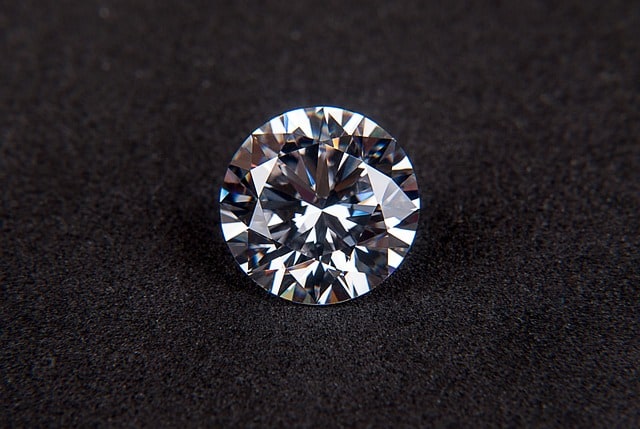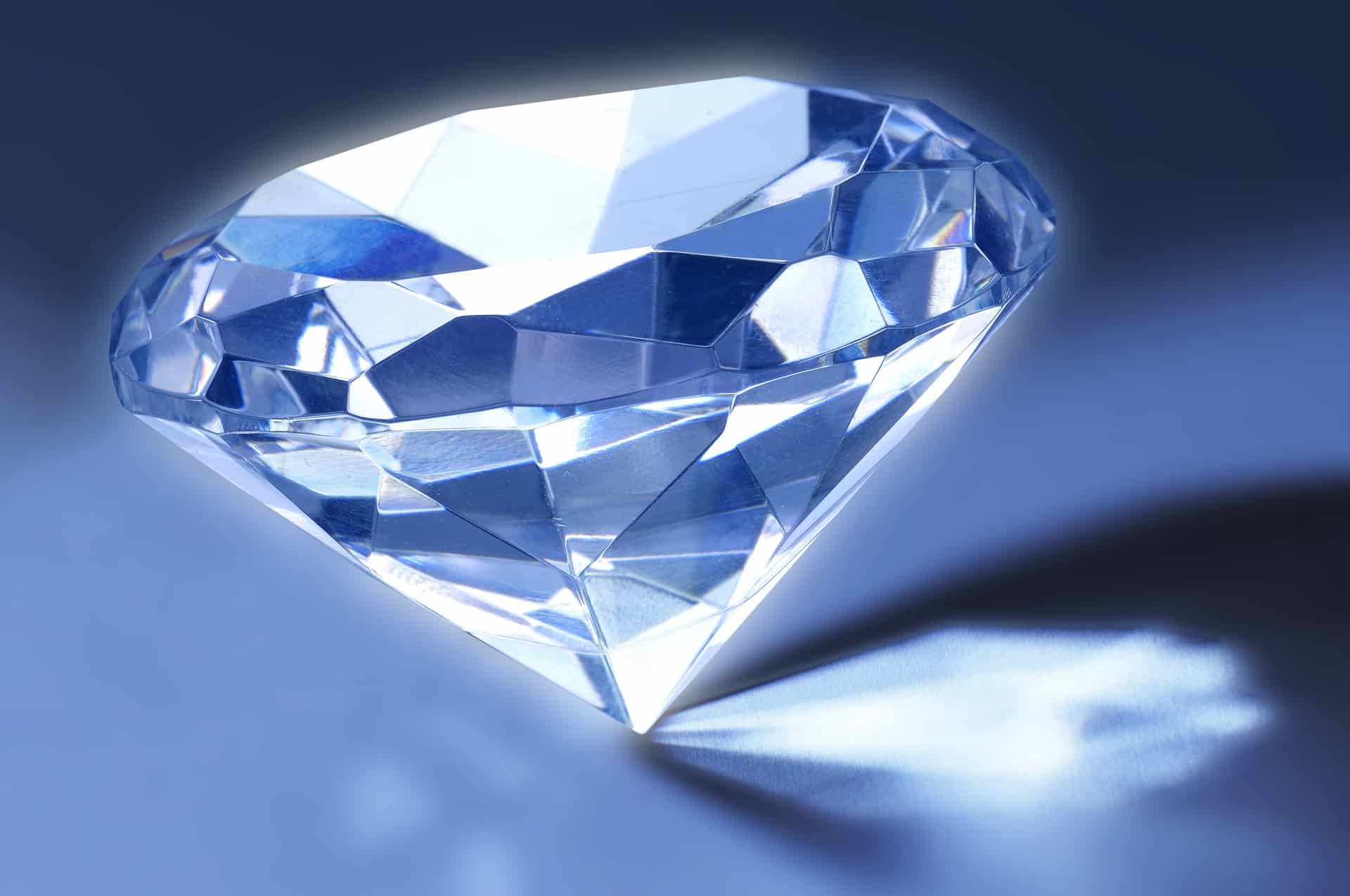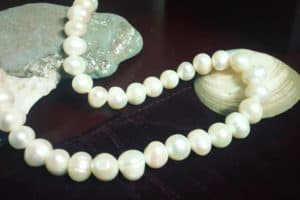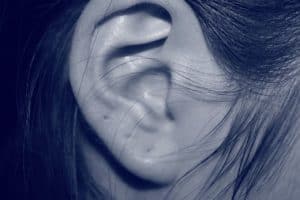It is surprising that the circumstances under which the hardest mineral/gemstone is formed are capable of making it vulnerable as well. It takes thousands of years to form and end up worth nothing as a pebble. Therefore, it is imperative to understand inclusions in diamonds if before you make a purchase, or even when you already own one.
While diamonds are known to last a lifetime, they sometimes change their appearance. The most common reason for a diamond to look cloudy is oil and dirt build up on the stone. External damage caused due to sudden blows is another factor. Scratches and chips also have the potential to turn your diamond cloudy. There can be other reasons like using harsh chemicals to clean your stone, or the stone being clarity enhanced.
In this article, we will look at different aspects of a diamond getting cloudy. Let”s delve deeper into it.
Why is my diamond suddenly cloudy?
Your diamond may be suddenly cloudy due to one of the following reasons:
- They are just dirty: Your diamond is not cloudy, but dirty! Sudden cloudiness could be because of the tendency of diamonds to attract oil and dirt. So, if you wear a diamond daily, it gets exposed to environmental factors just as you are. And even though they are resistant to most of those factors, touching the diamond directly could lead to the transfer of oil from your skin to the diamond and make it easier for dust particles to stick upon the facets. This makes a diamond appear cloudy. A thorough clean can help restore the luster.
- Your diamonds are clarity enhanced: Clarity enhanced diamonds may get cloudy when exposed to heat. So if you got your diamond reset, and you feel it turned cloudy since, your diamond may be clarity enhanced. If you already know it, it’s great. If not, please get your diamond inspected by an expert. Also check the receipt and other documentation you received when you first bought them.
- You did not notice it: The diamond was possibly, already cloudy, but you did not notice it! Sometimes, the diamonds shine so well under certain lights, that we do not realize that they are cloudy. Most of the times, the cloudy part of the diamond is at the base where it is less noticeable. So maybe it was the same when you bought it, but you never noticed it before. Also, you probably did not check the clarity rating of your diamond, it is probably SI and below.
- External Damage: Some scratches and chips may make your diamond appear cloudy. Any other damage to the surface may make it appear cloudy.
- It has developed feathers: Feathers also make your diamond appear white from certain places. Feathers may develop as a consequence of a harsh blow or bump.
- You got it repaired: Sometimes when you get your diamond reset or repaired, the process might involve heat. When subject to high heat for a long time, the stone usually develops a white oxidized layer. Normally this is polished and removed. However, if not done in the right manner, it may leave your diamond looking cloudy or white.

Why does my diamond look cloudy from the inside?
Sometimes a diamond may be cloudy from the start. It happens mostly because of two of the common factors:
- Cloud inclusion: So basically, inclusions are flaws that these diamonds own as a part of their formation, just like a birthmark. When the carbon atoms get the desired amount of heat and pressure, a crystallized structure is formed, known as diamonds. But sometimes, the diamonds gain a concentrated cluster of pinpoint or crystal inclusions due to unexpected circumstances. Now, if this cloud inclusion is small, things are fine. But if this inclusion is big enough, or at multiple spots, it affects the appearance and transparency, making it cloudy.
- Feather inclusions: Feather inclusions are similar to cloud inclusions. They make the diamond more cloudy than the cloud inclusions. It is because feathers are less transparent than cloud inclusions.
- Fluorescence: Fluorescence rating of a diamond can considerable impact it’s appearance. Diamonds with high fluorescence tend to appear milky, especially under daylight or natural light. Very strong fluorescence ratings can impact the appearance of your gemstone when under sunlight. It happens because of the chemical composition of the diamond in its encounters with sunlight. Each diamond is assigned a fluorescence rating after subjecting it to UV light. Since fluorescence is believed to negatively impact the diamond’s appearance under different lights, diamonds with high fluorescence are normally less expensive.
Can a diamond turn cloudy over time?
No, diamonds do not naturally turn cloudy over time. After all, they never change naturally after maturity. They remain unchanged and are highly resistant to a majority of environmental factors. There is a high probability that oil and dirt accumulation or daily wear and tear are making it appear cloudy. Or else, it could be because of one of the aformentioned reasons.
Do lab-grown diamonds get cloudy?
No, they don’t get cloudy naturally. Lab-grown diamonds maintain a high clarity property which is only present in high-quality natural diamonds. Even though it shares the same physical and chemical compositions as mined ones, they lack the flaws or inclusions which make them the perfect version of diamonds, but still artificial.
If your lab grown diamond is looking cloudy, it could be because of the reasons we discussed above like flourescene. Normally, it could be because of the following reasons:
- Dirt and grime accumulation: You can clean the diamond, and it will start looking like new again
- Low clarity: If your lab grown diamond has a low rating in terms of clarity (S1 and below), it will be slightly cloudy. But in this case, it will be cloudy from the beginning. If your diamond has turned cloudy, this would not be the reason.
What are potential substitutes for a diamond?
There are certain stones that a lot of people prefer. Some of them look a lot like diamonds and exhibit similar qualities that makes them famous. Let’s start with the most famous substitute.
- Moissanite: Despite being a gemstone, moissanite is created artificially due to its rarity. Appearance-wise, this one comes pretty close to diamond. It is even may possess better brilliance than diamonds. Also, it is close to diamond in terms of hardness.
- White Sapphire: White sapphire looks a lot like diamonds. It is also valuable just like diamonds.
- Cubic Zirconia: Made from zirconium dioxide, cubic zirconia is a synthetic substance and easily recognized as a substitute for diamond.
- Yttrium Aluminum Garnet (YAG): This is a synthetic, lab made diamond alternative.
- Spinel: It has a cubic crystal structure. A highly durable stone found in alluvial deposits.
- Synthetic garnet: Created by the method known as ‘flame fusion’, they have similar chemical properties as a real gemstone, and so does the look. You can take GGG (gadolinium gallium garnet) as an example for synthetic garnet.
- Morganite: It has a hexagonal crystal structure. It is a bit translucent. It looks like pink diamond but comes at a much lesser price.
- Rutilated Quartz: This one is much softer than a diamond composed of titanium dioxide. It is generally found in red and brown colors.
- Glass: Yes! Glass can be carved and fixed into jewelry to make it look like diamonds. Although, a lot of times it is easily distinguishable.

Do fake diamonds get cloudy?
Fake diamonds and imitation diamonds can get cloudy. But this does not imply that all fake diamonds get cloudy. Let us look at some of the substitutes:
- Moissanite: It is mostly able to maintain it’s sheen and brilliance over time. Since they are hard, it is not very easy to scratch or chip them.
- White sapphire: This is a very famous diamond substitute. White sapphire tends to get cloudy over time. This is mostly due to the chips and scratches on the surface.
- Cubic zirconia: It is highly susceptible to getting cloudy and dull. It gets scratched fairly easily and can also accumulate dirt and oil, making it appear cloudy.
- Yttrium Aluminum Garnet (YAG): The scratches on the surface and oil and dirt accumulation makes it look dull and cloudy over time.
- Spinel: Spinel stones do get damaged by heat and get cloudy when exposed to high temperatures or ultra violet rays for extended durations.
- Morganite: It also attracts oil and dirt and gets cloudy over time.
- Rutilated quartz: It gets dull and loses luster when won everyday. This is because it cannot withstand exposure to chemicals from detergents, soaps, lotions or perfumes.
- Glass: A lot of diamond look-a-likes are just nicely cut and well polished glass! They also get cloudy easily.
Let’s look at the table below to know some specifications of diamond and some of the diamond alternatives.
| Diamond Alternative | Does it get cloudy? | Susceptible to | Refractive Index | Hardness | Cost (Per Carat) |
|---|---|---|---|---|---|
| Diamond | No | High heat | 2.09-2.18 | 10 | $2000-$12000 |
| Moissanite | Very Rarely | Harsh chemicals | 2.65-2.69 | 9.5 | $400-$1000 |
| White Sapphire | Yes | Dirt and oil buildup | 1.77 | 9 | $750-$3500 |
| Cubic Zirconia | Yes | Scratches, Dirt and oil buildup | 2.15-2.18 | 8.5 | $20-$30 |
| YAG | Yes | Scratches, Dirt and oil buildup | 1.833 | 8.5 | $200-$250 |
| Spinels | Yes | High heat | 1.728-1.74 | 8 | $200-$500 |
| Morganite | Yes | Dirt and oil buildup | 1.57-1.58 | 7.5-8 | $400-$500 |
| Rutilated Quartz | Yes | Scratches, Chemicals and Soaps | 1.54-1.55 | 7 | $20-$40 |
| Glass | Yes | Heat, Scratches, Dirt and oil | 1.44-1.9 | 6.5 | $.05-$0.11 |
ADDRESSING THE CLOUDINESS OF DIAMONDS
How do you clear a cloudy diamond?
While not always can be rescued and made to look like new, there are some ways by which cloudy diamonds may be salvaged.
- At home cleaning: You can make a solution of warm water with a mild soap. Gently clean your diamond with it. If the cloudiness is due to accumulation of oil or dirt, your diamond should be good after this stage. Do not fall in trap of cleaning your diamond using harsh chemicals or ammonia based products. Such products can damage your diamond if it is color enhanced, or if your jewelry has other stones.
- Professional cleaning: I got my diamond engagement ring professionally cleaned after wearing it for 18 months. I was amazed by the results. It may help with getting rid of even the oldest oil build up.
- Polishing: If the cloudiness is due to minor scratches on the surface, e.g. on the table, polishing can help! For this, you can visit your nearest reliable jeweler.
It is best to get advice from a professional.
How can you reduce cloudiness in diamonds and make them clearer?
You can try any of the above mentioned ways like cleaning, getting it cleaned or polished by an expert. However if none of the above work, you may try one of the following:
- Try a different setting: If the cloudiness is due to a feather or inclusion at the base, your jeweler can help you hide it. If it is anywhere around the edges, some of the settings can help cover it, making your diamond look much clearer!
- Recut: If there are inclusions at certain places, a re-cut or repair may help get rid of it. Although this may impact the size and weight of your stone.
Is fluorescence bad for my diamonds or good?
It depends mainly on personal choice, and also on the color and clarity of your diamond. Also, interestingly, only 30% of the diamonds exhibit some kind of fluorescence. A lot of times, fluorescence is not noticeable in most diamonds. but unfortunately, for white diamonds, fluorescence does not work well. However, for diamonds that have a yellow tone, fluorescence makes them appear white and bright.
To understand this, we need to first know what fluorescence means. It is the behavior of the diamond when UV light is passed through it. If the diamond distributes blue light through it, fluorescence is said to be high. One thing to note here is that not all diamonds will fluorescence blue light, for some it might be green, magenta or red. The levels are rated based on the intensity of the light. Fluorescence is rated as:
- Very Strong
- Strong
- Medium
- Faint
- None
Now if it will be good for your diamond or not, depends on the following factors:
- Diamond with fluorescence will be cheaper: A lot of the times, diamonds with none or faint fluorescence are more expensive than the ones with high fluorescence. Two diamonds with the exact same rating in terms of the 4 Cs can be priced differently. The cheaper one will have higher fluorescence. So if you want to own a diamond, but your budget is not very high, you may go for a diamond with strong or very strong fluorescence.
- Durability is not impacted: We normally tend to think that something that is cheaper would not be durable. But thankfully, the durability or life of the diamond is not impacted by fluorescence. So two diamonds with different fluorescence can have the same life.
- Color of the diamond: In diamonds with color grading between I to M, fluorescence improves the sheen and brightness. If your diamond is yellow in tone, it will appear whiter because of fluorescence. However, white diamonds tend to look milky. this normally happens when the fluorescence is high. Higher the fluorescence, higher the milky appearance.
- It can make the diamond shinier: A lot of times, fluorescence makes diamonds more shinier! This is a positive that applies to a lot of diamonds.
- Check in different light settings: When buying a diamond, always ensure that you check it under different lights. In addition to colored light, check it under natural light. So always make your purchases during the day, and if possible, on bright sunny days!

Which clarity grade is the best for diamond?
The best clarity grade is Flawless or F. However, these can be extremely rare. Only 0.05% of the world’s diamonds have a grade F. Internally flawless is the next category. In this, the flaws are negligible and all of them are on the surface. There is no issue inside the diamond. These can also be expensive.
Generally, anything over VS2 clarity is considered okay. In these, no sings of inclusion are visible to the naked eye. Note that diamonds with the least inclusions will have a higher market value. And as we proceed down the list, the diamonds will have comparatively more inclusion and will be charged with a lower price.
What are the benefits of artificial diamonds over natural diamonds?
Some of the following reasons make artificial diamonds popular:
- Lower price: If you decides to buy an artificial diamond, you can buy the same quality diamond at about 30-50 percent lower price than a natural diamond.
- Eco-friendly: Since these gemstones are grown under lab, they do not involve any mining. Thus, these have a lower impact on nature and are safe to work on.
- Higher clarity: Since these are grown in a controlled environment in the lab, they tend to have higher clarity.
- Perfect version: As the diamonds are created under human observation, they lack the inclusion that natural diamonds have, making them a perfect diamond.
What is the most common mistake that customers make while buying a diamond?
Buying diamonds can be tricky, especially when you do not have much knowledge in the area. Some of the mistakes the customers make are:
- Having no knowledge: Making purchase decision without having any knowledge of diamonds. In such a case, the seller can sell you any imitation, even glass!
- Not checking return policy: Making an online purchase without checking the return policy can prove to be a disaster. A lot of times, it is impossible to judge the quality, color and inclusions through a picture. While a lot of reputed jewelers offer very clear images, you may still not be able to see the internal details clearly. Thus, always ensure you check the return policy and are able to get a full refund if you are not satisfied with the product.
- Compromising on quality: Settling for poor grade is another mistake. They tend to buy the cheaper one and compromising on the quality and grade of the diamond.
- Not buying from authentic sellers: Buying from a random store is never a good idea. One must always buy from authentic stores, that give the certificate with all the specific details.
- Not asking for a certificate: All diamonds should come with a certificate. These certificates lists all the specific details about your diamond. You would need these when you try to resell or exchange your diamond.
- Ignoring the certificate: Not checking the certificate for details is also a blunder. When you make a purchase, your certificate tells you how your diamond fairs on all 4 Cs. Along with this, it has details on any inclusions. You must always go through it. Sometimes buyers later observe a feather or inclusion, and when they request a return, they are told that this was already mentioned on the certificate.
- Not checking the return value: This miss also results in loss of a lot of capital invested. Some stores offer very poor return or exchange rates. Worse, some do not offer any return or exchange value.
- Looking for eye-clean diamonds: While most people are okay with buying diamonds that are eye-clean. However, eye-clean can mean different things for different people. It is always a good idea to inspect the stone carefully yourself and be satisfied with you are buying.

Which are the most and least common inclusion among diamonds?
The most common are pinpoints. The next are feathers. The least common ones found in jewelry are cavities. Clouds, crystals, graining, knots, etched channels, twinning wisps and laser drill holes are some other inclusions found in diamonds. There are about 11 inclusions in diamonds.
- Pinpoints: These are the small crystal dots inside the structure of the diamond that appear like points made using a sharp pin. They are mainly present on the surface or the table of the diamond. Good thing is that these aren’t easily visible individually.
- Feathers: These are cracks or fractures within the structure of a diamond. This can be dangerous as multiple cracks or large cracks can damage the entire body of the diamond.
- Cavity: As the name suggests, it represents a large or deep opening on the diamond’s surface. Since these are not fit for making jewelry, a lot of diamonds with cavities are used in industrial applications.
How to clean a diamond in a ring?
- Take lukewarm water in a vessel and add 1-2 drops of detergent.
- Keep your diamond ring inside the soapy water for approximately 10 minutes.
- Now take a soft bristle brush to clean the ring after removing it.
- Now place the ring again inside the soap water.
- Gently brush again to remove all the dirt and pollution from the diamond surface as well as the ring.
- Use clean water to rinse and wash off the residue.
- Use a soft muslin cloth or a hairdryer on cold setting to dry the ring.
Note: Do not use chlorine, bleach, ammonia or any other kind of chemical for cleaning your jewelry. They can potentially damage your jewelry.
How are diamond inclusions graded?
There is a specific way to grade diamond inclusions and provide diamonds their rating. In the certificate, the inclusions are mentioned in the order that describes how significant the same is. The inclusion mentioned at the top is the inclusion that highly governed the diamond rating. The one mentioned in the end is considered to have the least impact on the rating. Certain things that are kept in mind are:
- Top down approach: The diamond is inspected from top to bottom. An inclusion at the base is considered better than an inclusion somewhere in the middle. An inclusion at the table is graded as the worst.
- Internal/External Inclusions: External inclusions are graded worse in comparison to inclusions that are internal. This is because external inclusions are more visible to the eye.
- Area/Size: This one is a no brainer! Bigger inclusions are rated poorer in comparison to smaller ones.
- Number of inclusions: A diamond with more inclusions would have a lower grading than a diamond with fewer. Considering the fact that the inclusions are of the same type and size.
- Placement of the inclusion: The placement of the inclusion may have an impact on the durability of the diamond. E.g. If a feather is present around any of it’s edges and goes deep inside the stone, even a gentle blow is enough to break the diamond. This is what experts inspect and rate the diamond accordingly.
- Comment Section: Certain aspects about the inclusions may be present in the comment section of the diamond’s report.
Do diamond inclusions devalue the stone?
Yes, inclusions do have an impact on the value of a diamond. However, all inclusions impact the cost differently.
- Visibility: The more visible an inclusion, higher will be the impact on it’s value. E.g. if the feather or a chip is clearly visible, the value of the stone will plummet.
- Risk of damage: If an inclusion poses the risk of compromising the structure of the stone, it will drastically devalue the stone.
- Placement of the inclusion: As aforementioned, presence of inclusion on the surface reduces the value of the stone. The placement towards the bottom, or one that would be covered in the setting does not impact the cost as much.
- Impact on clarity: As we have discussed in the article, the less clear an inclusion makes the stone, the lower would be the value of the diamond.
Yes, external blemishes have more impact on the price than internal flaws. Take an example of a chip on a diamond. Since it is more likely to be visible with naked eyes, they are capable of devaluing the stone.
Bottom line
Diamonds with lower inclusions will have higher prices. Because the only thing diamond does is reflect the lights to most. And in case it fails to do so, the worth falls to a greater extent.
One must always be sure of the clarity, cut and color of the diamond. The certificate of the diamond must be thoroughly studied when you buy a diamond to know of any known inclusions beforehand. Also, inspect the diamond in natural light. The store usually has very bright lights. In such bright lights, it is difficult to see the damage or inclusions in the diamonds.
Until next time!




